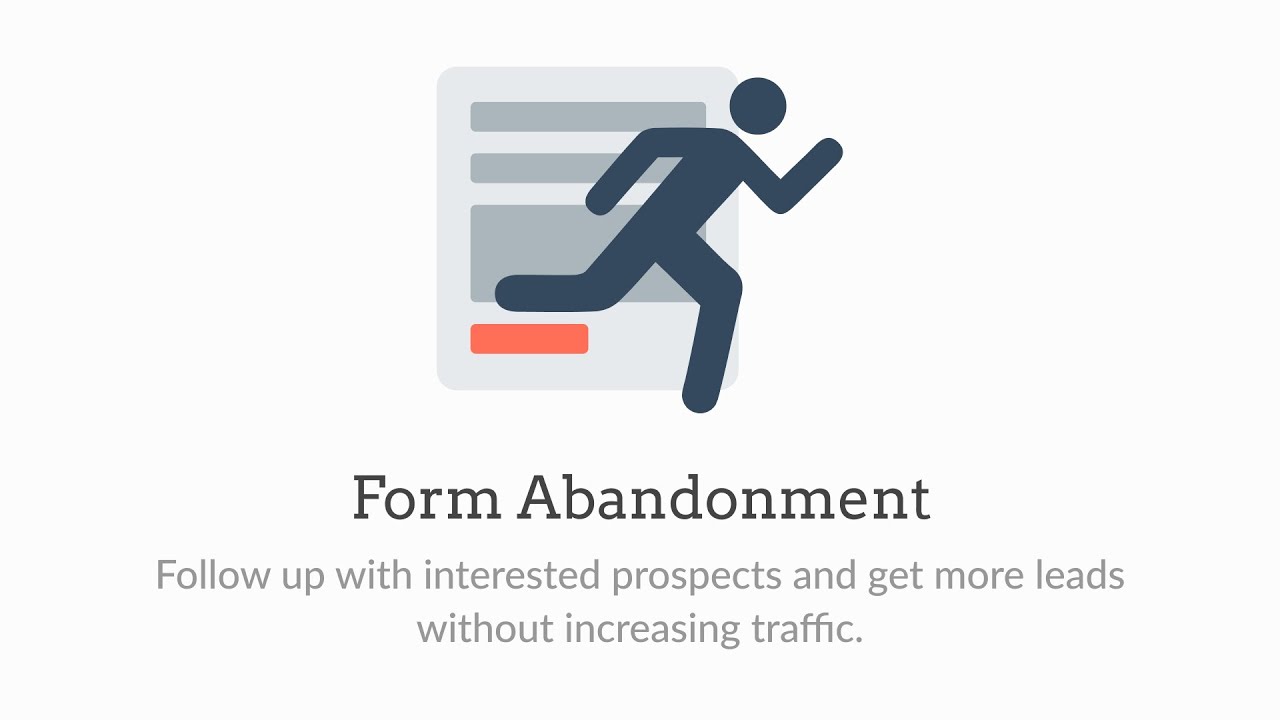Form abandonment is a common challenge in the digital marketing world, where potential leads start filling out forms but fail to complete them. This not only results in lost opportunities but also impacts your overall conversion rates. In this blog, we’ll explore effective strategies to reduce form abandonment and increase conversions, helping your business grow.
Understanding Form Abandonment
What is Form Abandonment?
Form abandonment occurs when users leave a form without submitting it. This often happens when forms are too long, complex, or not user-friendly.
Why Does It Matter?
Every form left incomplete represents a missed opportunity to capture valuable customer data, impacting lead generation and sales. Understanding the reasons behind form abandonment helps in creating more user-friendly forms.
Common Causes of Form Abandonment
- Lengthy Forms: Excessive fields can deter users.
- Complex Design: Complicated layouts confuse users.
- Lack of Mobile Optimization: Poor mobile experiences lead to higher drop-offs.
- Unclear Instructions: Users may abandon forms if instructions aren’t clear.
- Lack of Trust: If users feel their data isn’t secure, they may not complete forms.
Tips to Avoid Form Abandonment
1. Simplify Your Form Design
- Keep it Short and Sweet: Users are more likely to complete forms that require minimal effort. Limit the number of fields to what is essential for your purpose.
- Use Clear Labels: Ensure each field has a clear and concise label, so users know exactly what information is needed.
- Limit Required Fields: Make only the most necessary fields mandatory. Optional fields can reduce user pressure and improve completion rates.
2. Optimize for Mobile Users
- Responsive Design: Ensure your forms are fully responsive and adapt seamlessly to any device. Mobile users should find it just as easy to complete your forms as desktop users.
- Easy Navigation: Use large buttons and intuitive layouts to enhance usability on mobile devices. Simplify navigation to keep users engaged.
3. Use Progress Indicators
- Show Completion Steps: Implement progress bars or step indicators to inform users how far along they are in the form process. This reduces anxiety and encourages completion.
- Reduce User Anxiety: Knowing how many steps remain helps users stay committed, decreasing the likelihood of abandonment.
4. Provide Instant Feedback
- Error Messages: Use clear, helpful error messages when users make mistakes. Avoid technical jargon and offer solutions to guide users through the process.
- Validation Checks: Implement real-time validation to immediately alert users to any errors, allowing them to correct mistakes on the spot.
5. Offer Autofill and Autocomplete Options
- Reduce Typing Effort: Autofill options can significantly reduce the amount of typing required, making the process faster and more user-friendly.
- Enhance User Experience: Autocomplete can predict user inputs, streamlining the process and improving user satisfaction.
6. Implement a Save and Continue Option
- Allow Users to Return: If your form is lengthy, give users the option to save their progress and return later. This flexibility reduces the chance of drop-offs.
- Reduce Drop-Off Rates: By allowing users to complete forms at their convenience, you increase the likelihood of conversion.
Increasing Conversions
1. Offer Incentives
- Discounts or Freebies: Offering something in return for completing a form, like discounts or free resources, can motivate users to finish the process.
- Exclusive Content: Provide access to valuable content, such as ebooks or whitepapers, in exchange for form completion.
2. A/B Test Your Forms
- Experiment with Layouts: Test different form designs to determine which layout performs best. Consider changes in field order, color schemes, and overall design.
- Test Different CTAs: Different calls-to-action can yield different results. Test various phrases and placements to see what drives the most conversions.
3. Use Social Proof
- Testimonials: Display positive feedback from existing customers to build trust with potential leads. Testimonials can reassure users that others have had a positive experience.
- User Reviews: Highlighting user reviews adds credibility and encourages users to complete the form.
4. Optimize Call-to-Action (CTA)
- Use Strong Action Words: Compelling CTAs can significantly influence conversion rates. Use direct and action-oriented phrases like “Get Started Now” or “Claim Your Free Trial.”
- Make It Stand Out: Ensure your CTA is visually distinct from other elements on the page. Use contrasting colors and bold fonts to draw attention.
Additional Strategies to Consider
1. Address Privacy Concerns
- Show Security Seals: Displaying security badges can reassure users that their data is safe.
- Explain Data Usage: Clearly state how you will use their data and ensure your privacy policy is easily accessible.
2. Use Exit-Intent Popups
- Capture Attention: When users attempt to leave, use popups offering incentives or reminders to complete the form.
- Reduce Abandonment: This can be a last attempt to engage users who are about to abandon the process.
3. Personalize the User Experience
- Dynamic Content: Use personalized greetings and tailored content to make users feel valued.
- Segmented Forms: Tailor forms to different user segments, ensuring relevance and increasing the likelihood of completion.
Conclusion
Reducing form abandonment and increasing conversions requires a combination of user-friendly design, strategic incentives, and effective communication. By implementing these tips, you can create forms that are not only easy to complete but also highly effective at converting visitors into leads.
FAQs
- What is form abandonment?
- Form abandonment occurs when users start filling out a form but leave before completing it, leading to missed conversion opportunities.
- How can I reduce form abandonment?
- Simplify your form, optimize for mobile, provide clear instructions, and use incentives to encourage completion.
- Why is mobile optimization important?
- A significant portion of users fill out forms on mobile devices, making responsive design crucial for enhancing user experience and reducing abandonment rates.
- What are effective CTAs?
- Use direct, compelling phrases like “Get Started Now” or “Claim Your Free Trial” to encourage form completion.
- How can social proof help conversions?
- Displaying testimonials or reviews builds trust, which can reassure users and encourage them to complete the form.
